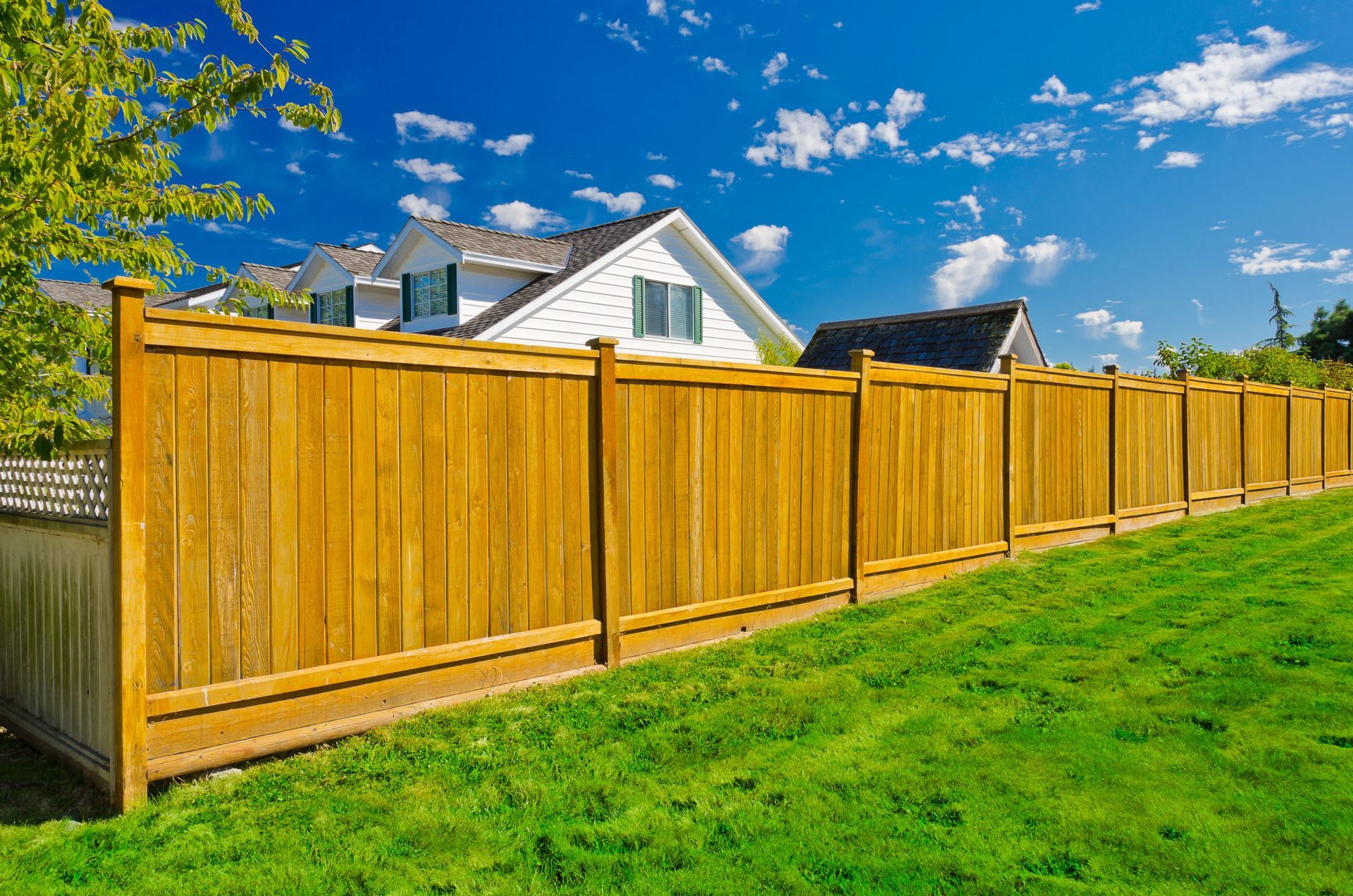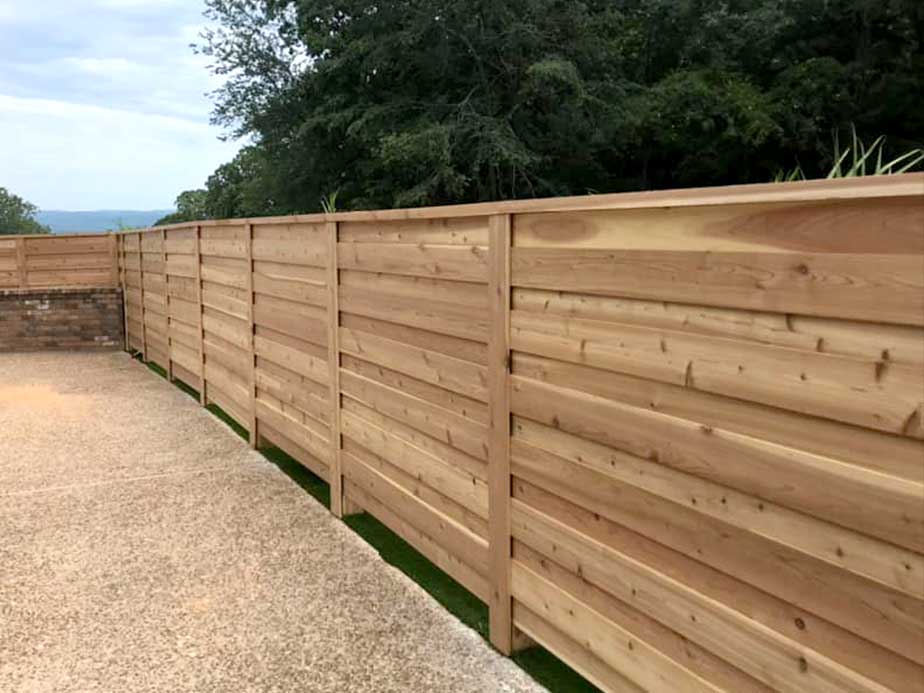All Categories
Featured
Preserving your fencing is necessary to ensure its look, functionality, and longevity. Various materials have special maintenance needs, influenced by factors such as environment, exposure to elements, and planned use. Whether your fencing is made of wood, vinyl, metal, or various other materials, recognizing its care needs will aid keep it in optimum condition. Right here's a summary of just how to preserve different kinds of fencing products effectively.
![]()
Cleaning: Utilize a pressure washer or soapy water with a soft brush to remove mold, algae, and dust. This ought to be done annually or biannually. Tarnishing and Sealing: Apply a sealer or stain every 2-- 3 years to avoid moisture damage and UV fading. Pick a premium item suitable for exterior use. Repair services: Change warped, deteriorated, or split boards as quickly as possible to avoid additional damages. Insect Monitoring: Treat with a wood chemical to protect versus termites and other parasites. 2. Plastic Fences. Vinyl fencings are preferred for their low-maintenance nature yet still call for some maintenance.
Cleaning: Laundry the fencing with a blend of water and mild cleaning agent utilizing a soft sponge or cloth. Avoid rough cleaners that might scratch the surface area. Examinations: Examine for splits or spaces periodically, specifically after tornados. Vinyl can end up being brittle in incredibly winter. Preventing Staining: Eliminate discolorations immediately. For tough spots, make use of a vinegar service or a vinyl-safe cleansing representative. 3. Chain-Link Fences. Chain-link fences are useful and sturdy, usually used for protection and boundary marking.
Corrosion Removal: Evaluate for rust consistently, particularly in damp or seaside areas. Get rid of rust with a wire brush and use a rust-proof layer. Cleaning: Wash with water to remove dirt and particles. Use a scrub brush for areas with hefty accumulation. Tightening and Services: Make certain the articles and web links remain tight. Change damaged sections or equipment as needed. 4. Wrought Iron Fencings. Wrought iron uses a sophisticated look however requires regular interest to avoid rust and keep its surface.
Corrosion Prevention: Sand off any kind of rust spots and use a rust-resistant guide and paint. This ought to be done every year or as needed. Cleansing: Use a moderate soap option and a soft fabric or sponge to remove dirt. Prevent extreme chemicals that can damage the steel. Painting: Reapply paint every couple of years to safeguard the iron and enhance its look. 5. Aluminum Fences. Aluminum fences are light-weight, corrosion-resistant, and call for marginal treatment.
![]()
Cleansing: Use soapy water and a fabric to clean up the fence, rinsing extensively to avoid streaks. Examinations: Look for loosened screws or panels periodically. Secure or replace parts if needed. Touch-Ups: Usage paint developed for light weight aluminum to cover any scrapes or chips, safeguarding the metal underneath. 6. Compound Fences. Compound fence is made from recycled products, incorporating the look of wood with higher sturdiness.
Cleaning: Rinse with water and utilize a moderate cleaning agent to get rid of dirt and spots. Stay clear of abrasive tools that might damage the composite surface. Assessments: Search for indications of bending or fracturing, especially in areas with extreme temperature level changes. Form Avoidance: Tidy mold or mildew without delay with a blend of water and white vinegar. 7. Bamboo Fences. Bamboo fence is eco-friendly but a lot more fragile than other products.
Cleaning: Use a soft brush with soapy water to clean dirt and particles. Prevent using extreme water stress to stop splitting. Sealing: Use a water-resistant sealer every 2-- 3 years to protect against weather damages. Fixings: Replace split or broken bamboo poles as required to maintain the framework and look. General Maintenance Tips. Trim Plant Life: Keep vines and shrubs away from the fence to stop dampness buildup and damages. Seasonal Treatment: In winter season, clear snow buildup from fences to prevent tension on the framework. In summer season, look for sun damages or fading. Routine Examinations: Walk along the fence line occasionally to look for loosened equipment, leaning sections, or various other indicators of wear. Conclusion. Despite the kind of secure fencing material, regular upkeep is the vital to preserving its feature and appearances. Wood fencings require one of the most upkeep, while vinyl and light weight aluminum require much less initiative yet still benefit from periodic cleansing and evaluations. By dealing with minor problems early and carrying out routine treatment, you'll enjoy a fence that stays strong and attractive for several years to come.

- Wood Fencings. Wood fences are traditional yet call for routine care to secure against weather and bugs.
Cleaning: Utilize a pressure washer or soapy water with a soft brush to remove mold, algae, and dust. This ought to be done annually or biannually. Tarnishing and Sealing: Apply a sealer or stain every 2-- 3 years to avoid moisture damage and UV fading. Pick a premium item suitable for exterior use. Repair services: Change warped, deteriorated, or split boards as quickly as possible to avoid additional damages. Insect Monitoring: Treat with a wood chemical to protect versus termites and other parasites. 2. Plastic Fences. Vinyl fencings are preferred for their low-maintenance nature yet still call for some maintenance.
Cleaning: Laundry the fencing with a blend of water and mild cleaning agent utilizing a soft sponge or cloth. Avoid rough cleaners that might scratch the surface area. Examinations: Examine for splits or spaces periodically, specifically after tornados. Vinyl can end up being brittle in incredibly winter. Preventing Staining: Eliminate discolorations immediately. For tough spots, make use of a vinegar service or a vinyl-safe cleansing representative. 3. Chain-Link Fences. Chain-link fences are useful and sturdy, usually used for protection and boundary marking.
Corrosion Removal: Evaluate for rust consistently, particularly in damp or seaside areas. Get rid of rust with a wire brush and use a rust-proof layer. Cleaning: Wash with water to remove dirt and particles. Use a scrub brush for areas with hefty accumulation. Tightening and Services: Make certain the articles and web links remain tight. Change damaged sections or equipment as needed. 4. Wrought Iron Fencings. Wrought iron uses a sophisticated look however requires regular interest to avoid rust and keep its surface.
Corrosion Prevention: Sand off any kind of rust spots and use a rust-resistant guide and paint. This ought to be done every year or as needed. Cleansing: Use a moderate soap option and a soft fabric or sponge to remove dirt. Prevent extreme chemicals that can damage the steel. Painting: Reapply paint every couple of years to safeguard the iron and enhance its look. 5. Aluminum Fences. Aluminum fences are light-weight, corrosion-resistant, and call for marginal treatment.

Cleansing: Use soapy water and a fabric to clean up the fence, rinsing extensively to avoid streaks. Examinations: Look for loosened screws or panels periodically. Secure or replace parts if needed. Touch-Ups: Usage paint developed for light weight aluminum to cover any scrapes or chips, safeguarding the metal underneath. 6. Compound Fences. Compound fence is made from recycled products, incorporating the look of wood with higher sturdiness.
Cleaning: Rinse with water and utilize a moderate cleaning agent to get rid of dirt and spots. Stay clear of abrasive tools that might damage the composite surface. Assessments: Search for indications of bending or fracturing, especially in areas with extreme temperature level changes. Form Avoidance: Tidy mold or mildew without delay with a blend of water and white vinegar. 7. Bamboo Fences. Bamboo fence is eco-friendly but a lot more fragile than other products.
Cleaning: Use a soft brush with soapy water to clean dirt and particles. Prevent using extreme water stress to stop splitting. Sealing: Use a water-resistant sealer every 2-- 3 years to protect against weather damages. Fixings: Replace split or broken bamboo poles as required to maintain the framework and look. General Maintenance Tips. Trim Plant Life: Keep vines and shrubs away from the fence to stop dampness buildup and damages. Seasonal Treatment: In winter season, clear snow buildup from fences to prevent tension on the framework. In summer season, look for sun damages or fading. Routine Examinations: Walk along the fence line occasionally to look for loosened equipment, leaning sections, or various other indicators of wear. Conclusion. Despite the kind of secure fencing material, regular upkeep is the vital to preserving its feature and appearances. Wood fencings require one of the most upkeep, while vinyl and light weight aluminum require much less initiative yet still benefit from periodic cleansing and evaluations. By dealing with minor problems early and carrying out routine treatment, you'll enjoy a fence that stays strong and attractive for several years to come.
Latest Posts
Relied On Automobile Fixing in Chicago-- Quality Service, Fair Rates!
Published Feb 24, 25
1 min read
Create a Safe and Beautiful Boundary with Washington Fence
Published Feb 22, 25
1 min read
Enhance Your Residential or Commercial Space with Expert Fencing
Published Feb 20, 25
1 min read
More
Latest Posts
Relied On Automobile Fixing in Chicago-- Quality Service, Fair Rates!
Published Feb 24, 25
1 min read
Create a Safe and Beautiful Boundary with Washington Fence
Published Feb 22, 25
1 min read
Enhance Your Residential or Commercial Space with Expert Fencing
Published Feb 20, 25
1 min read